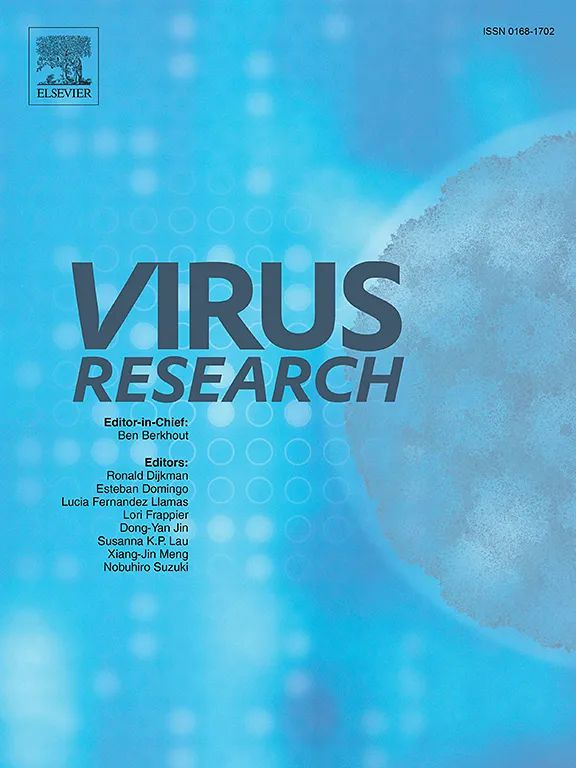JNK kinase promotes inflammatory responses by inducing the expression of the inflammatory amplifier TREM1 during influenza a virus infection
IF 2.7
4区 医学
Q3 VIROLOGY
引用次数: 0
Abstract
Since the twentieth century, four influenza pandemics caused by IAV have killed millions of people worldwide. IAV infection could induce acute lung injury mediated by cytokine storms, which is an essential cause of death in critically ill patients. Consequently, it is crucial to explore the regulators and regulatory mechanisms of cytokine storms, which may provide potential drug targets and expand our understanding of acute lung injury. Previous studies have shown that JNK kinase is essential in promoting inflammatory responses during viral infections. In this study, we demonstrated that JNK kinase could regulate the IAV-induced cytokine storms by affecting the expression of pro-inflammatory and anti-inflammatory factors. Further studies revealed that inhibition of JNK kinase activity significantly downregulated the expression of the inflammatory amplifier TREM1. Besides, TREM1 knockdown could significantly inhibit the expression of pro-inflammatory factors. Furthermore, SP600125 is a specific inhibitor of JNK kinase. The results show that TREM1 overexpression reversed the effect of SP600125 treatment on the expression of pro-inflammatory factors. Together, we found that JNK kinase could activate the inflammatory amplifier TREM1 to promote inflammatory responses during influenza A virus infection. These findings may provide some inspiration for subsequent researchers to explore the regulatory mechanisms of cytokine storms induced by emerging viral infections.
在甲型流感病毒感染期间,JNK激酶通过诱导炎症放大器TREM1的表达来促进炎症反应
自20世纪以来,由禽流感病毒引起的四次流感大流行已造成全世界数百万人死亡。IAV感染可引起细胞因子风暴介导的急性肺损伤,是危重患者死亡的重要原因。因此,探索细胞因子风暴的调控和调控机制至关重要,这可能提供潜在的药物靶点,并扩大我们对急性肺损伤的理解。先前的研究表明,在病毒感染期间,JNK激酶在促进炎症反应中是必不可少的。在本研究中,我们证明了JNK激酶可以通过影响促炎因子和抗炎因子的表达来调节iav诱导的细胞因子风暴。进一步研究发现,抑制JNK激酶活性可显著下调炎症放大器TREM1的表达。此外,敲低TREM1可显著抑制促炎因子的表达。此外,SP600125是JNK激酶的特异性抑制剂。结果表明,TREM1过表达逆转了SP600125治疗对促炎因子表达的影响。我们发现,在甲型流感病毒感染期间,JNK激酶可以激活炎症放大器TREM1,从而促进炎症反应。这些发现可能为后续研究人员探索新发病毒感染诱导的细胞因子风暴的调控机制提供一些启发。
本文章由计算机程序翻译,如有差异,请以英文原文为准。
求助全文
约1分钟内获得全文
求助全文
来源期刊

Virus research
医学-病毒学
CiteScore
9.50
自引率
2.00%
发文量
239
审稿时长
43 days
期刊介绍:
Virus Research provides a means of fast publication for original papers on fundamental research in virology. Contributions on new developments concerning virus structure, replication, pathogenesis and evolution are encouraged. These include reports describing virus morphology, the function and antigenic analysis of virus structural components, virus genome structure and expression, analysis on virus replication processes, virus evolution in connection with antiviral interventions, effects of viruses on their host cells, particularly on the immune system, and the pathogenesis of virus infections, including oncogene activation and transduction.
 求助内容:
求助内容: 应助结果提醒方式:
应助结果提醒方式:


